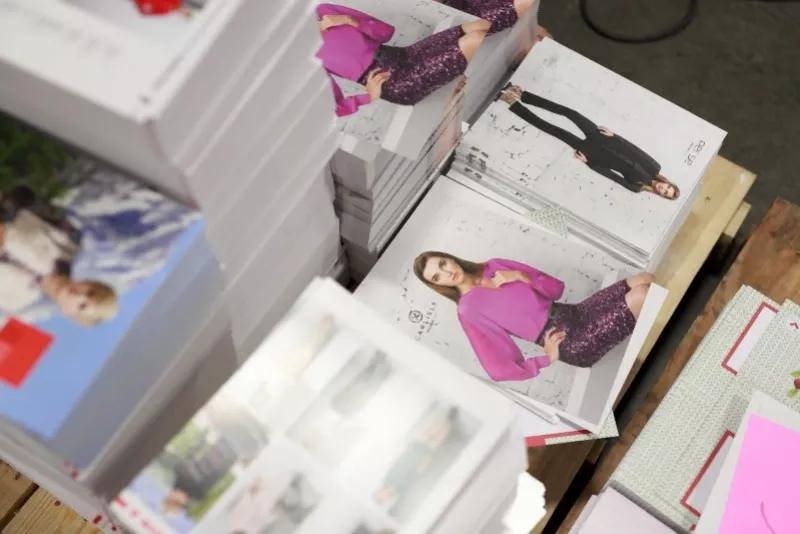With smart devices sitting in our pockets and strapped to our wrists, there’s no denying digital media has a huge effect on the way we live and interact with brands every day.
But despite what many businesses see as a complete shift from paper to pixels, print is not going away anytime soon. In fact, the numbers tell us just the opposite. Cluttered inboxes and the constant bombardment of messaging online has breathed new life into direct mail, giving consumers something they can see and touch––a refreshing alternative to the noisy web.
According to the Direct Marketing Fact Book, over half of consumers of all ages have made a purchase as a result of direct mail––a number that doesn’t seem to be changing anytime soon.
For marketers, the challenge isn’t just finding the right message––they now have to decide whether it belongs on a screen or on paper.
We’ve broken down the three most important questions to ask when picking the right medium for your message.
1. HOW MUCH ARE YOU ASKING OF YOUR AUDIENCE?
In other words, how long is it going to take them to read, watch or otherwise engage with your message?
SKIMMING AT A GLANCE
If your campaign light and skimmable, meant only to generate awareness or tickle your audience’s curiosity without going too far in-depth, you’ll definitely want to go digital one way or another.
Whether it’s a blog post like this, a social media series or a brief webinar/video, people have trained themselves to skim the web for short, bite-sized pieces of content they can consume quickly.
If the average person can absorb everything you have to say in 10 minutes or less, put it online.
A 10-20-MINUTE READ
This is a little trickier. Expecting the average person to engage with a piece of media online for any longer than five minutes can be hard enough––unless of course your audience isn’t the average person.
Especially in B2B markets where readers are used to investing longer periods of time to read an eGuide, whitepaper or some other long-form article, the digital space may be the perfect place to not only publish that media, but encourage your audience to share and discuss it with others.
A 30+ MINUTE READ
Print it. People have short attention spans as it is. Staring at a screen for 20-30 minutes and then having the time and energy to take action is simply too much to expect from the average person browsing the web.
That’s not to say we won’t make that investment at all. Just like a book or magazine, most of us have no problem sitting down and reading through a printed piece for hours on end if the content is compelling.
It’s important to note that if you’re expecting such a commitment from your audience, it’s important to make sure that time is filled with something exciting and engaging from beginning to end.
2. WHAT DO YOU WANT THEM TO DO WITH IT?
Obviously the end goal is to generate business, but what about immediate next steps? What you want your audience to do with your message should have a big influence on how you present it to them.
UNDERSTAND YOUR MESSAGE
If the goal is as simple as highlighting a key benefit or identifying a problem and then positioning your product or service as a solution to it, consider how complex those benefits or problem/solutions are.
If it’s a simple message that can be stated in an easily-consumable tidbit, it’s most likely better suited for the online audience. If it’s something someone has to sit down and think about in-depth, print can create that lasting connection people are more willing to invest in.
SHARE IT WITH OTHERS
Digital media is made to be shared. Unlike making physical copies of a print piece, copying a digital article, social post, image or video takes the click of a button.
3. HOW BIG IS YOUR AUDIENCE?
While the size of your target audience matters less for digital, it has huge implications for print. If you’re struggling to decide what kind of print piece will be most effective, consider the size of the audience you’re trying to reach.
SMALL AUDIENCES
When the target pool is small, high-quality print-on-demand provides a huge cost benefit to marketers looking to get the most out of their spend, even when budgets are tight.
Professional print-on-demand providers allow you to keep your projects on file, and print only when an order’s been placed. This means no costly storage and faster time-to-market for each campaign.
LARGE AUDIENCES
If your campaign is targeting many people across different demographics, the next big question becomes personalization. If you decide to run with personalized print pieces, you’re looking at a whole different set of options versus the alternative.
PERSONALIZED PRINT CAMPAIGNS
Use digital printing. High-volume laser or inkjet printers will deliver an exceptional high-quality product perfect for presentations, personalized flyers, brochures, invites and more.
Rather than mass-printing your campaign materials from a single location, single-source digital printers like OneTouchPoint allow you to send files to locations all across the country, allowing you to cut shipping and distribution costs by distributing locally.
Click here to learn more about our cost-effective digital print services.
NON-PERSONALIZED PRINT CAMPAIGNS
If you feel your message is strong enough without the personal touch variable data affords, offset printing is your best bet for success. Offset presses excel at taking traditional production techniques and creating very large volume orders of high-quality documents.
Stunning brochures, attention-grabbing direct mail pieces, and other tried-and-true print pieces all come to life through offset printing.


